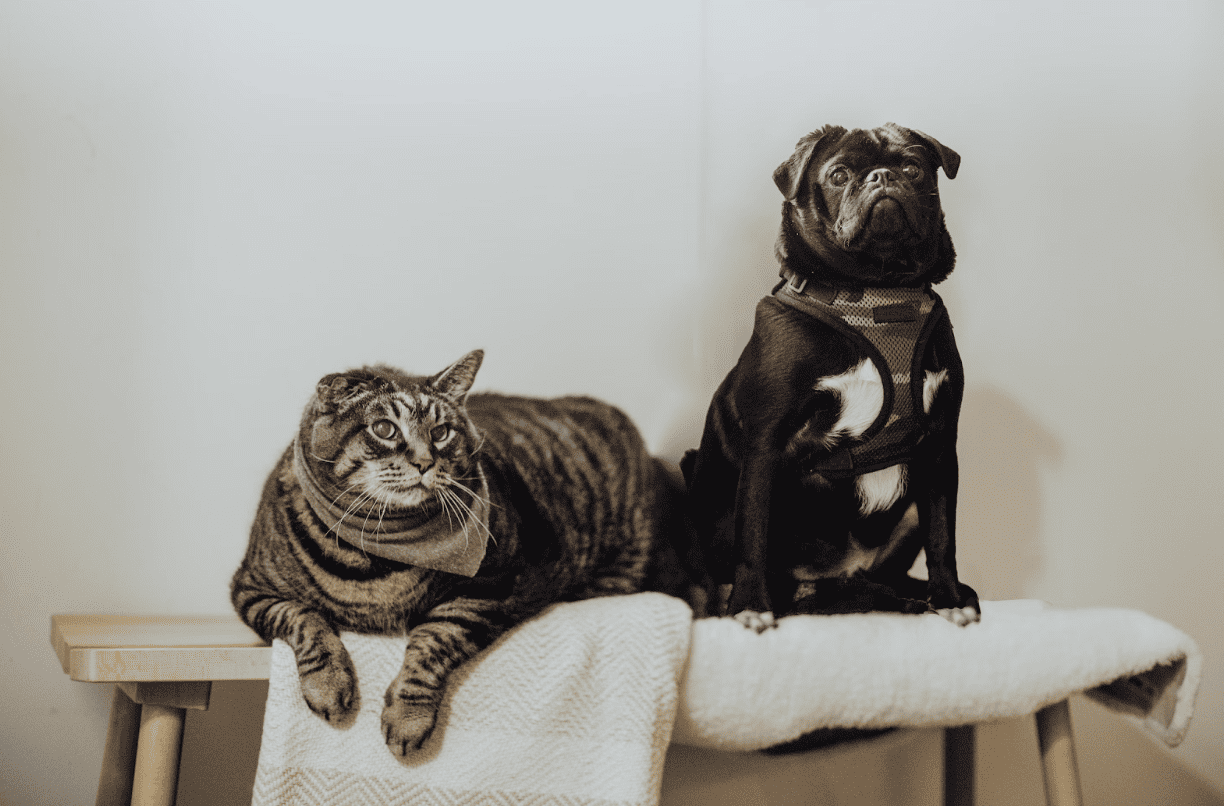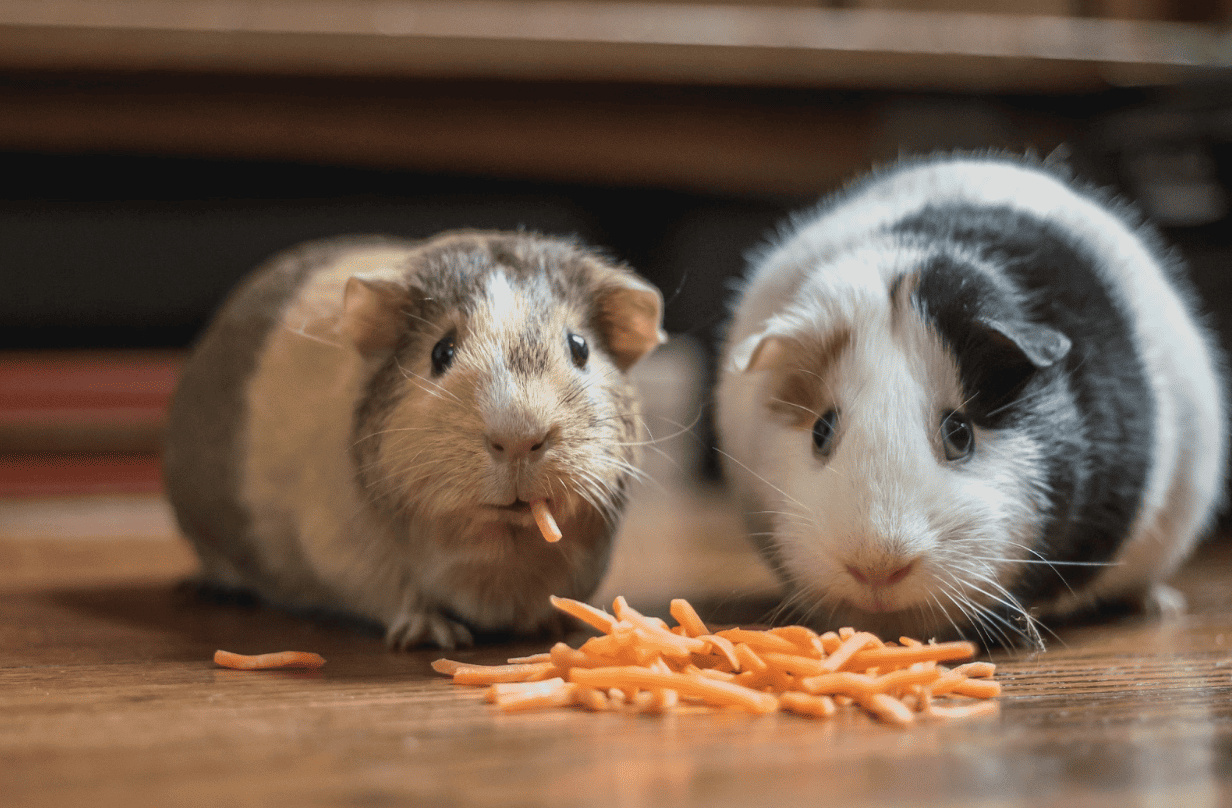Photo by Priscilla du Preez from Unsplash
Imagine a household brimming with furry, feathery, or scaly companions—from dogs playfully chasing their tails to cats perched on window sills, all the way to chirping birds or curious hamsters. This idyllic setting isn’t a far-fetched dream but a reality that many multi-pet families aspire to.
Achieving this harmonious blend of paws and whiskers, however, isn’t always a walk in the park. It requires a nuanced approach, tailored to the diverse personalities, needs, and quirks of each animal member in your pet-inclusive family.
The Dynamics of Dogs and Cats: A Balancing Act Worth Mastering
When it comes to the quintessential pets—dogs and cats—the harmony or discord that reigns in your household rests largely on how well these two species interact. Although the stereotype suggests that cats and dogs are natural enemies, the reality is more nuanced. There is a myriad of factors that can contribute to their relationship, such as temperament, age, and past experiences with other animals.
Dogs, often the extroverted, active members of the household, can sometimes overwhelm more reserved cats. Therefore, it’s crucial to ensure your dog respects the cat’s boundaries. Training sessions focused on basic commands like ‘sit’ or ‘stay’ can be a preliminary step in establishing this mutual respect. On the flip side, a timid cat might require a space where it can retreat and feel secure, away from a boisterous dog.
It’s not only about getting them to tolerate each other but also facilitating a bond that can be as fulfilling as it is adorable. Sharing positive experiences—whether it’s cuddle time on the couch, or a synchronized treat-dispensing moment—can strengthen their relationship over time. You may even find that they develop their own forms of communication, a secret language that aids them in navigating their shared lives.
In some cases, their dynamics can be complementary. A playful dog might encourage a lazy cat to engage in more physical activity, while the presence of a calm and composed cat might have a soothing effect on an anxious dog. So, it’s important to think of their relationship as an ongoing project, constantly shaped by their interactions and your interventions.
Small Animals as Unsung Heroes
Level up your pet parenthood by adding smaller pets along with dogs and cats. It is often a matter of socialization and boundary-setting. Introducing a small animal can offer your cat or dog an opportunity to engage in a different sort of interaction, one that encourages gentle play and even parental instincts.
Small animals are generally lower-maintenance compared to dogs and are less demanding of your time, but their influence can be profoundly positive. The mere presence of a fish tank can captivate a cat for hours, providing them with mental stimulation. Similarly, the chirping of birds can pique the curiosity of both dogs and cats, keeping them entertained and mentally engaged. Some dogs even form close bonds with smaller pets like guinea pigs, displaying protective behavior that’s utterly heartwarming to witness.
Smaller Pets that Complement Canine and Feline Companions
Smaller pets offer new avenues of interaction and engagement for your existing larger pets, and they can also enrich the human lives in the household. Let’s explore different small animals that can seamlessly integrate into a home with dogs and cats.
Fish
Fish like tetras will reach a maximum size of two inches, so they won’t require a large tank, making them easy to have even in small spaces. They can captivate the attention of dogs and cats for hours. While they don’t directly interact with other pets, the serene ambiance they create can have a calming effect on the entire household. Make sure to place the aquarium in a location where it’s visible but not accessible to pawing.
Rabbits
Rabbits are social animals, often enjoying the company of other pets when introduced properly. While dogs might view them as playmates, cats may find rabbits less threatening than other felines. Always remember that a gradual introduction is key, and never leave them unsupervised during the initial meetings.
Guinea Pigs
Photo by Bonnie Kittle from Unsplash
They can be a joy to have around dogs and cats, provided that they are kept in a secure environment. Their squeaks and movements can pique the curiosity of your larger pets while offering you another layer of companionship. Again, supervision and controlled interactions are essential.
Birds
Parrots and other birds offer a completely different interaction model. Their singing can be soothing to humans and pets alike, and their capacity for mimicry can engage both dogs and cats in a different type of ‘conversation.’ However, ensure the bird’s cage is out of reach to prevent any unfortunate incidents.
Precautions and Preparations: Ensuring a Smooth Transition
Just as enriching as the addition of a smaller pet can be to a household with dogs and cats, so too are the responsibilities and considerations that come with it. Ensuring a smooth transition requires more than just a cheerful introduction. It necessitates thoughtful planning, supervised interactions, and ongoing adjustments to accommodate the needs of all pets involved
Quarantine Periods
A quarantine period is often advisable when introducing a new, smaller pet. This allows time for any potential health issues to be identified and addressed before interaction with other pets begins. It also provides the newcomer time to adjust to its new environment without the added stress of meeting larger animals.
Supervised Introductions
Never underestimate the importance of a controlled, supervised introduction. Especially in the case of dogs and rabbits or cats and birds, the predatory instincts can sometimes get the better of them. Each introduction should be done in a safe, neutral environment to minimize territorial aggression.
Creating Safe Spaces
For small pets like hamsters or guinea pigs, creating a safe space is crucial. Their living quarters should be secure enough to prevent accidental intrusions by larger pets. Similarly, birds should have cages that are both sturdy and placed at a height inaccessible to your dogs or cats.
Monitoring Interactions
Continual supervision is essential during the early days of cohabitation. Even if initial meetings go well, the dynamic can quickly change, necessitating swift human intervention. Gradually, as you notice all pets becoming more comfortable with each other, you can ease off the constant watch but continue to monitor interactions sporadically.
Ongoing Adjustments
Remember, the work isn’t over after the first week or even the first month. You’ll need to continually assess the dynamic between your pets, making adjustments to schedules, spaces, and interaction times as needed to maintain a harmonious living environment.
Conclusion
Creating a peaceful and enriching environment for dogs, cats, and smaller pets is possible with the right planning and ongoing care. From understanding the unique dynamics between different animals to taking important precautions, you can build a household where all pets live in harmony.


